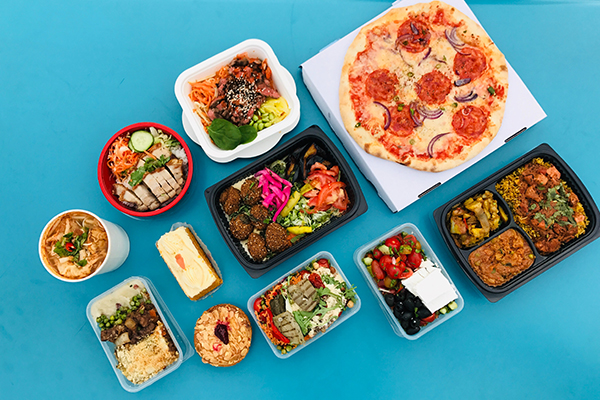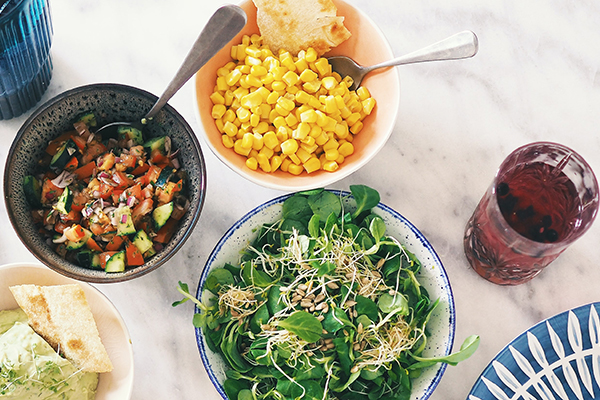Book review: Fight fear with radical acceptance
Fight Fear with Radical Acceptance
BOOK REVIEW: Radical Acceptance: Embracing Your Life with the Heart of a Buddha, by Tara Brach
Tara Brach’s book Radical Acceptance offers helpful tips on staying balanced in the moment, adjusting to new realities and moving on. This feels particularly timely as we live with COVID-19 in our midst. The mental health of many people has been affected by fear, social isolation and constant change.
“The emotion of fear often works overtime,” writes Brach. She continues:
Even when there is no immediate threat, our body may remain tight and on guard, our mind narrowed to focus on what might go wrong. When this happens, fear is no longer functioning to secure our survival. We are caught in the trance of fear and our moment-to-moment experience becomes bound in reactivity. We spend our time and energy defending our life rather than living it fully.
Brach is suggesting that fear can quietly go too far. We do need to assess threats and decide how to protect ourselves. Beyond that, endlessly obsessing can do more harm than good. Multiple studies show that prolonged stress, worry and fear can impair the immune system—our main defense against illnesses, including COVID-19.
Endlessly obsessing over news or imagining the worst can be a way of pushing away the present reality. “Fear is the anticipation of future pain,” Brach writes. Fear can make us forget what we have to be grateful for—like moments we are safe, healthy and have enough food, supplies and friends. “By running from what we fear, we feed the inner darkness,” says Brach; it’s a way of “manipulating my inner experience rather than being with what [is] actually happening.”
Of course, we all are living with loss these days, such when we experience shortages of supplies or money, canceled events, limited social connection, a health crisis or even the loss of a loved one. Facing the reality inside ourselves with radical acceptance at those times is equally powerful: “The instant we agree to feel fear or vulnerability, greed or agitation, we are holding our life with an unconditionally friendly heart.”
Brach’s advice of facing each moment with radical acceptance can help us balance our physical and mental health, protecting us from both real external threats and the damage our minds can do worrying too much about them.
PUT IT INTO ACTION!
- Tara Brach’s Radical Acceptance
- www.yogabynature.org/podcast-app-video
- “Shut up brain” podcast
- www.verywellmind.com—search for “podcast”
- “Mindfulness Coach” app, developed by the VA
Let us know if these tips helped you at StayHealthy@pacmed.org. Read more about PacMed’s response to COVID-19.
Nutrition: A review of meal subscriptions
NUTRITION CORNER: Taking a Look at Meal Subscriptions
By Christy Goff, MS, RDN, CD
Many of us have been doing a lot more cooking recently. And while this can be great for expanding our recipe repertoire and learning new techniques … sometimes it nice to have some shortcuts. Here, we explore one such option: meal subscription boxes or kits.
In general, meal subscriptions are pricier options for meal planning. But they save you time by taking planning, shopping and meal prep decisions out of the equation.
Some meal kits have lengthy steps, while others keep things simple; some give more choices for proteins, while others offer savings through coupon and first-timer deals. Meal subscriptions generally help alleviate food waste, and many programs say their kits come with less packaging than the supermarket.
Let’s review some of the pros and cons of several popular services. Please note that PacMed is not affiliated with any of these companies, and this review is done on an individual basis.
Blue Apron
Blue Apron delivers food boxes, and you cook the meals yourself. The company tends to have less selection of meals, plus limited flexibility if you don’t opt into a continuous delivery subscription. Some reviewers have said that while Blue Apron provides tasty meals, they often require a lot of steps.
Variety of food: Familiar ingredients used in a new way. Several protein selections as well as vegetarian and Mediterranean options. Wine pairings are available with specific dishes.
Cost: Subscriptions run $7.49–$9.99 per serving or start at $47.99 per week, depending on the plan and shipping costs.
Website: www.blueapron.com
Hello Fresh
Hello Fresh delivers ingredients to your door, and you prepare the meals following the easy directions. You pick the dishes from the company’s chef-curated list and schedule convenient delivery times. You have some flexibility with the number of boxes you choose to purchase. Many people are pleased with this service when interviewed.
Variety of food: Mostly crowd-pleasing classics that are time efficient. Hello Fresh caters to vegetarian diets, as well as low-calorie and family-friendly packages. It’s easy to add additional protein/veggies to these meals.
Cost: $9.99 per serving, plus shipping in some plans. (It often promotes coupons for additional meals.)
Website: www.hellofresh.com
Freshly
Freshly delivers cooked meals. You choose your meals from a rotating menu and a variety of cuisine preferences. Reheat meals lightly and enjoy! This is the easiest of kits if you are looking to save time.
Variety of food: Good variety of options, including diets such as vegetarian, gluten-free, peanut-free and dairy-free. No prep time; just heat and eat.
Cost: Choose from 4-12 meals per week, ranging from $50/week for 4 meals to $108/week for 12 meals. Free shipping.
Website: www.freshly.com
Green Chef
Green chef prides itself on using only sustainable and organic ingredients, making this kit a bit more expensive. It delivers ingredients and meal instructions, which you follow to put together the meal.
Variety of food: Twists on classic meals as well as globally inspired ideas. Green Chef caters to vegetarian, vegan, ketogenic and paleo. Its gluten-free menu is certified gluten-free, meaning diners following this strict diet can have confidence in this service.
Cost: $11.49–$12.99 per meal. Occasional shipping costs, but coupons often available.
Website: www.greenchef.com
Purple Carrot
With this vegan meal kit, you make meals using pre-packaged ingredients and recipe cards. Although many kits are vegan/vegetarian friendly, this is also a great option for those moving toward a vegetarian or vegan diet to gain more variety and skills in vegan cooking.
Variety of food: Variety of food: Offers worldly cuisine options and easy-to-follow cooking instructions for plant-based meals, such as tofu and tempeh. Purple Carrot rotates its menu items often.
Cost: Around $12 per serving plus shipping.
Website: www.purplecarrot.com
The number of businesses offering meal kits grows each month—check out Gobble, Home Chef and Sun Basket! These popular kits can lead to healthier eating if you stay with the provided portion sizes. Before signing up, look for coupons, know your budget and check to see if contracts will auto-renew. To save money in the future, consider keeping recipes from your meal kits and using them in your own meal planning and grocery shopping endeavors.
Happy cooking and eating!
Taco Tuesday—Mason Jar Style
I enjoy recipes that are flexible with ingredients you already have in your kitchen—and most of these ready-to-go mason jar salads are no exception.
Tips: Use a wide-mouth, 16-ounce mason jar (or other tall glass or plastic container with tight lid).
- Put the dressing in first, to avoid a soggy salad.
- Pile in individual ingredients, in the order listed—hardy vegetables or proteins on the bottom, delicate leaves and seeds on top.
- You can store the salad for 1-2 days.
- When ready to eat, shake and tumble jar until contents are mixed, and enjoy! Eat it straight from the jar (great for a picnic!) or pour into a bowl.
Mike Diabetes Star
Mike P., a Diabetes STAR Patient
Mike is the sort of person where seeing is believing. When he was diagnosed 20 years ago with type 1 diabetes, he needed to know that he truly could have an impact on the disease. So he signed up with a weight-loss program. “I needed to confirm the physiology of the disease,” he explains. As his weight dropped and his blood sugar numbers improved, Mike was convinced. From then on, he was all about finding solutions that worked for him and fit his life.
Finding Focus with a Smart-Phone App
Mike was motivated. “I wanted to live a long life with my wife and children,” he says. But he also was stymied—“How do I do this?!” He had attended PacMed diabetes support groups and nutrition classes, but what pulled it all together for him was an app on his smart phone.
“I realized technology could help me make a change in the foods that I ate and the exercise that I wasn’t doing,” he says. The app focused him where he didn’t have a focus before. Shopping became routine, convenient and even fun. He could plug foods into the app and quickly know what he could buy.
Enlisting Confidants
At 260 pounds, Mike knew from his days as a Navy Pilot that his ideal weight was 207 pounds. “I’d had assertiveness training in the Navy, and it was time to be assertive with myself,” he says.
Mike knew he needed to change his diet—“no more chips or chocolates!” And he knew he needed his wife and daughter’s support if this was really going to work. “My family became my confidants,” he says. “They participated in food exclusions and supported my goals and attitudes.”
Strong Tools, Strong Results
Mike went from a 44 waist to a 38 in six months. He’s lowered his A1c levels from 8.2% to 6.1%. He’s cut most of his medications in half. “It’s important to get your tools together,” Mike advises. “An app, a meter you can and will use everywhere, food labels—and your brain, the best tool in the tool pouch!”
“The rewards come in all sizes,” Mike says. “They may be better test results, a smiling spouse, a pleased doctor or comments from coworkers.” Once a week Mike and his family treat themselves. They go to their favorite restaurant and enjoy an 800-calorie meal—steak, potatoes, mushrooms. They really enjoy their weekly ritual.
PacMed can help you find an approach that suits you. Talk to your provider and learn more at www.PacMed.org/diabetes.
Georgia Diabetes Star
Georgia, a Diabetes STAR Patient
As retired military, Georgia knows how to be disciplined. When she was diagnosed with type 2 diabetes 15 years ago, losing weight became a top goal. She’d lost 60 pounds several times, but always gained it back. So she made a plan—and lost 130 pounds!
“I never set out to lose half my weight! That’s a goal I’d never be able to make. I’d feel defeated before I even started,” says Georgia.
Losing a Whole “Me”
Georgia looked at her weight in 10-pound increments. She’d set a goal to lose 10 pounds and then maintain her new weight for three months. Then she’d set another 10-pound goal and hold that weight. And so on.
It took Georgia four years to lose 130 pounds—an amount that’s more than her current body weight. She’s kept it off for five years. And this past spring, Georgia’s doctor took her off all her medications!
Georgia also set out to learn all she could about diabetes. She did a lot of reading. She also had some habits to change—such as dealing with stress by eating a processed sweet, like a Twinkie or Ding Dong. “Now they taste terrible!” she says. Today, she watches what she eats and finds alternatives that taste just as good.
Yea Team!
Georgia learned that the people around her play a crucial role. “I don’t let others sabotage my efforts. It’s amazing how many people do that!” she says. “I just tell them to leave me alone, that I want to eat healthy.” And that’s exactly what she does. She appreciates her friends and family who are also focused on health and encourage her.
“I wish I had known at the get-go that there are great support groups for diabetics—people who are in the same boat, who you can talk with,” adds Georgia. PacMed offers monthly support groups for patients and their supporters.
No Place to Go But Up
As for the psychological aspect to losing weight, Georgia adds, “My aunt would say that you need to reach your Benjamin Bottom—that point where there is no place else to go but up. I reached it: I was tired, couldn’t get a date… I’m a fun, nice person, and I wanted more out of life!”
Since then, Georgia has fallen in love, feels great and has an excellent team at PacMed who guide her and cheer her on. “Diabetes is not a death sentence unless you let it be,” she says. “If you want to have a normal life, there are choices.”
PacMed can help you find an approach that suits you. Talk to your provider and learn more at www.PacMed.org/diabetes.
Jeremy Diabetes Star
Jeremy B., a Diabetes STAR Patient
Many of Jeremy’s first thoughts about his diagnosis were driven by fear. Would he have to give himself shots? How would he deal with his health—and juggle his role as stay-at-home father? Would he die?
Not to worry! Jeremy has created a positive, loving environment and built up good habits to improve his health. He has lost over 200 pounds, cut his medications in half and brought his diabetes under control. “The more you do, the more progress you make,” says Jeremy. “I am very motivated to keep going!”
Finding the Positive
Jeremy was concerned by persistent swelling in his legs. So he visited his PacMed primary care provider. The diagnosis: lymphedema and type 2 diabetes. Diabetes runs in Jeremy’s family, so he wasn’t entirely surprised. Plus, his weight topped 475 pounds, and he knew he had poor eating habits.
It took Georgia four years to lose 130 pounds—an amount that’s more than her current body weight. She’s kept it off for five years. And this past spring, Georgia’s doctor took her off all her medications!
Jeremy wants to live a long life and enjoy his son and daughter as they grew into adulthood. To turn things around, he focused on the positive.
Nothing Like Good Friends
Jeremy’s first task was to create a caring, encouraging team. At home, he was in a stressful and unsupportive situation and felt isolated. Every effort at good health was sabotaged. So he made a big change: he left and moved in with a good friend.
“Ever since I moved, I’ve lost weight,” says Jeremy. In 15 months, he dropped close to 200 pounds. With less stress in his life, he no longer lets his emotions control his eating. “My friend believes in me. He encourages me to take walks—and gets on me when I slip up.” Twice a month, they loosen up, heading out for a meal and trivia at a favorite pub.
Jeremy continues to see the same doctor, even though he is now farther from the clinic. They have a strong rapport and have found solutions that suit Jeremy. Not a fan of needles, he is pleased to use pills rather than injections to help manage his diabetes.
Taking Charge for Good Health
“It’s important to take charge of your health,” Jeremy advises. He takes the stairs at the light rail station, instead of the escalator. He uses a blood sugar meter to make sure his sugar levels are between 40 and 150 . By attending nutrition classes, he has learned about ingredients and portions—“It’s all about the process of managing what you eat.”
After a recent snow storm, Jeremy shoveled a path for his neighbor. Not so long ago, he wouldn’t have even thought about doing that! He wasn’t emotionally and physically capable to help out like that.”
Today, he’s aiming for 300 pounds and hopes to buy a bike. “I feel so much better and have the energy to do more things,” says Jeremy. “It’s an incredible feeling!”
PacMed can help you find an approach that suits you. Talk to your provider and learn more at www.PacMed.org/diabetes.
Dan P., Diabetes Star
Dan P., a Diabetes STAR Patient
Dan’s diagnosis of type 1 diabetes wasn’t a simple, linear process. Hardly! See, Dan’s super healthy—a gym owner, personal trainer and athlete with a degree in exercise science. Fitness and health are his life. So three years ago, he wasn’t sure what to make of some unusual symptoms. But diabetes sure wasn’t one of his guesses.
Undeniable Symptoms and the Power of Denial
Dan didn’t have any energy when he worked out and could barely finish his warm up. His strength was noticeably diminishing, he’d dropped 20 pounds and he was urinating a lot. “I thought I had a cold,” he says.
On Christmas, Dan drank a couple Mimosas—champagne with orange juice. “I fell asleep … and kept on sleeping all the way through Christmas.” His girlfriend’s dad had a glucometer. When Dan’s blood sugar measured 670–680, the father told him to go immediately to the hospital. “I told him that his machine was faulty!” says Dan.
Dan did eventually visit a hospital, and he stayed for 10 hours. Getting his diagnosis correct was tricky. First they pegged him as a type 2 diabetic, then type 1.5. In the end, his diagnosis is type 1 diabetes.
Building a Team
Dan has a quiet confidence about him, and although he’s struggled with it, he’s taken his diagnosis in stride. “I went through a ton of trial and error figuring out how to manage my blood glucose while exercising. If I had been around other type-1 athletes, I could have learned much quicker and not had so many frustrating issues.” PacMed offers several diabetes classes and support groups.
Dan and his girlfriend are learning about nutrition and diabetes together. “I’ve always known how to read nutrition labels. That’s a really important skill.” His friends also are supportive. A couple of times, a friend has had to come to Dan’s rescue because he didn’t bring enough food—or none at all. “I could stand to get better at this,” he notes.
Dan’s happy to report that he’s gained back the 20 pounds he lost and is much leaner, with less body fat.
A Silver Lining or Two
“My diabetes diagnosis has caused me to grow up much faster,” says Dan. “I’m more responsible, and business at my gym has really picked up.” At the gym, Dan’s added more nutritional components. He loves helping others and, someday, may cater some services to people with diabetes.
“I would tell other type-1 diabetics that of all the diseases out there, type 1 diabetes is pretty awesome because it’s very manageable,” he adds. “If you can move your body, you can control the disease.”
PacMed can help you find an approach that suits you. Talk to your provider and learn more at www.PacMed.org/diabetes.
Ever-Changing Healthy Snack Mix
This throw-together snack mix combines salty and sweet flavors for a satisfying munch. And because it contains whole grains, fiber, protein and unsaturated fat, it provides an energy boost with hunger relief that lasts. Keep the recipe fresh by using different nuts or low-sugar cereals, but realize that the nutritional value will change.
Eggplant and Caramelized Onion Dip
This a great choice for a holiday appetizer—full of flavor without all the cheese, sour cream or butter in most dips. Eat and Enjoy!









